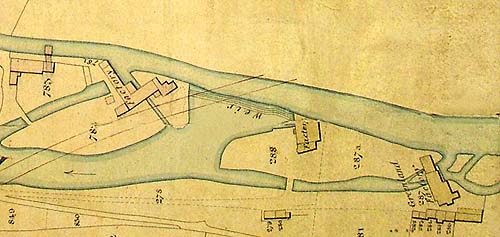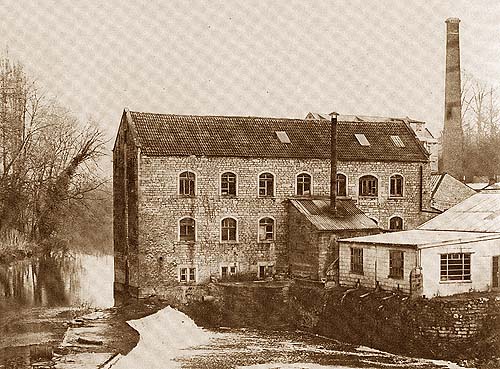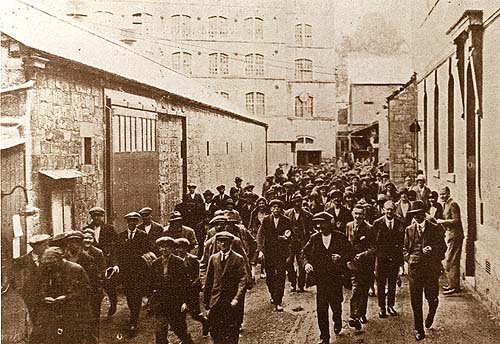 |
|
Greenland
Mills, Bradford on Avon
|
 |
| 1837 Ashmead Map showing
the 3 Mills and later lines show where the railway would cross over the
islands and river |
 |
| |
 |
|
Greenland
mill workers in 1979
|
|
Greenland
Upper Mill
|
| The Mill with the
other adjoining mills was owned by the Halls and then the Duke of Kingston
who in 1718 is shown leasing it to Thomas Methuen. By 1804 it had been bought
by John Hinton, and a factory had been built on the site. Thomas Tugwell,
grandson of Humphrey Tugwell, ran this factory from 1810 until 1825. By
1832, the tenants were Yerbury, Edmonds and Company. In 1841, the factory
was empty except for the fulling mill, which was being occupied by Thomas
Spackman junior. The executor's of the owner- John Hinton offered the factory
for sale in 1844. From 1851 until 1905, J. W. Applegate and Co. ran their
woollen business from the premises. |
|
Greenland
Middle Mill
|
| A Fulling Mill was
offered to let in 1746 by the Duke of Kingston, and later in the 19th Century
it was purchased by John Fisher, Millman. He built a large factory which
was let to Stoddart. In 1832 it was occupied by Thomas Spackman who also
had the Fulling Mill. In 1862 it burnt down, but was partly reinstated and
was owned by a number of people until finally bought by Applegate Brothers
of the adjoining Upper Mill. |
|
Greenland
Lower Mill
|
There is an early
reference to a Tucking Mill being occupied by John Yewe and Richard Horne
in 1592 as part of the John Hall's Estate. Later a successor, the Duke of
Kingston let it and is referred to as the lower fulling mill. It was bought
by John Renison and William Shrapnell in 1797 from Lord Newark for £1,350.
later John Renison let his part of the Mill to Philip Shrapnell of Monkton
Combe. By 1808 the rateable value had shot up from 3d to 2s1d, indicating
that a factory had been built by William and Philip Shrapnell as partners.
But by 1811 it was taken over by Elimelech Edmonds and Mawbey Tugwell at
a rent of £460.
Mawbey died in 1815, but the firm known as Yerbury, Tugwell and Edmonds,
remained there until 1824. In that year Edmunds assigned the remainder of
the leasehold interest to Saunders, Fanner and Saunders, and moved his business
to their larger factory in Church Street. Unfortunately the new firm went
bankrupt in 1841, and it was not until after 1850 that it was bought by
Stephen Moulton and added to his rubber works at the nearby Kingston Mill.
|
| |
| |
| |


